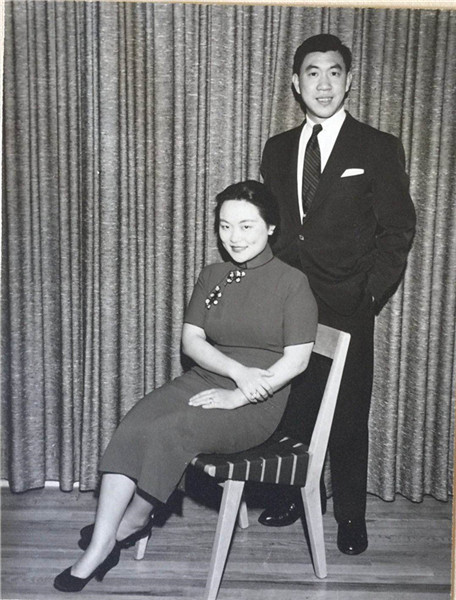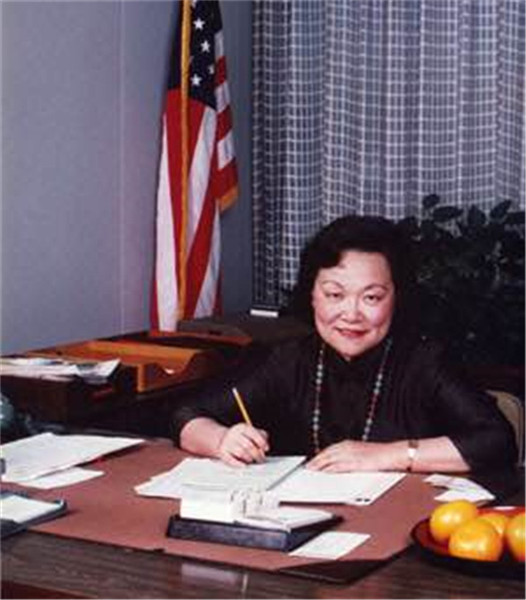
2018-9-5 10:31:03
From:english.eastday.com
Lu Yukun
Linda Tsao Yang: desire for changes helped Shanghai through stalemate and challenges

Linda and her husband Professor Yang Ci'an in the 1950s
It was in the 1980s that Linda came back to Shanghai for the first time from the U.S., when she was nearly 60 years old. "I felt the number of citizens had grown a lot. However, the colors of clothing worn by citizens on the streets were dull and drab—either grey or blue. I barely saw any new buildings and houses were old and shabby. When I strolled along West Nanjing Road, I noticed a scarcity of commodities in the store windows, which seemed not very appealing."

Linda Tsao served as a California Savings and Loan Commissioner in the early 1980s
Dull and stagnant. That might be Linda’s impressions about her hometown after she came back in the 1980s. However, the situation made sense to Linda at that time thanks to her background in economics and the banking industry. First, China was still an agriculture-focused economy in the 1980s and most of its population were still living in rural areas. It made sense that reform and opening up started in rural areas and cities were not given priority. Secondly, most of Shanghai’s tax revenues went to the central government and it was difficult for Shanghai to develop its infrastructure based on its own resources.
At the same time, compared with the sweeping reform and opening up in cities like Shenzhen and Zhuhai in Guangdong, the development in Shanghai was quite slow. The city was faced with such challenges as out-moded industrial equipment, an unbalanced economic structure (the proportion of the tertiary sector had dropped to less than 20%), and limited and narrow urban spaces for development. Shanghai was in desperate need of opening up and development to revitalize its economy at that time.
